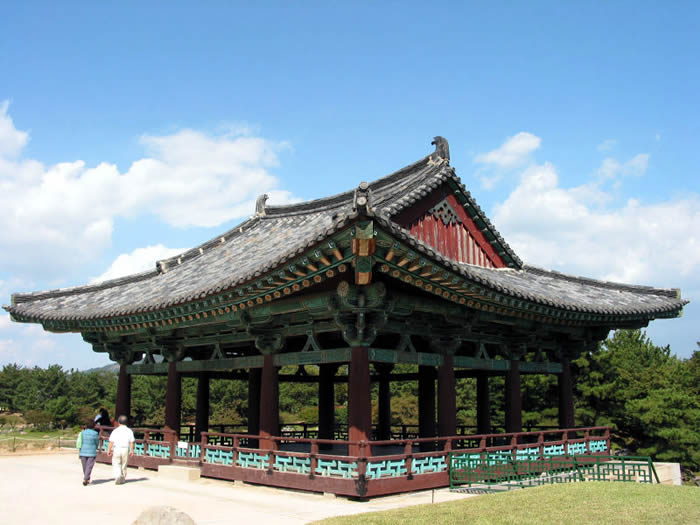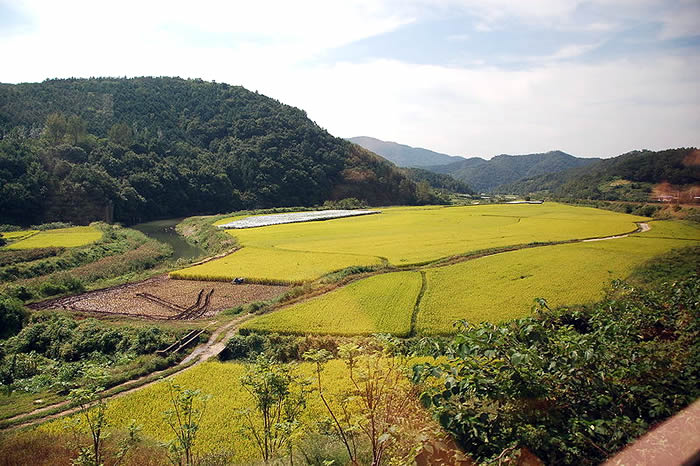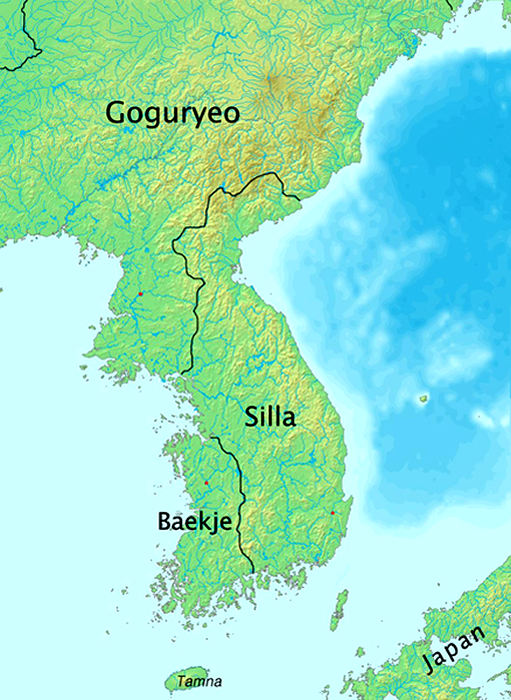 Silla Kingdom
Silla Kingdom

(Text by Duane R. Hurst © 2013)
Click on a link to view its information and pictures.
|
SILLA LINKS: Significant Event: Anapji Pavilion Rice Cultivation Silla Bell of King Seongdeok Main Cities: Gyeongju Time: 57 BC - 935 AD Language: Korean Personage: Gyeongsun; Park Hyeokgeose Religion: Buddhism; Korean Religion Related Country: North Korea; South Korea Brief History: I have included only a few items concerning the history of this kingdom. A good source for more details can be found on Wikipedia or in history books. HISTORICAL NOTES: This was one of the three Korean kingdoms and one of the world's longest lasting dynasties. King Park Hyeokgeose founded it in 57 BC, but the empire actually was ruled by the clan of Gyeongju Kim. Silla rulers conquered the other Korean kingdoms: Baekje in 660 AD; Goguryeo in 668 AD. Another major power player was the Seok clan, including King Talhae. |
|
|
CONSOLIDATION:
Silla allied with Emperor Taizong against Goguryeo in 646 AD. Taizong personally led an army that captured many fortresses on the Lioning Peninsula. However, the general commanding Goguryeo forces at Ansi (modern Anshan) stymied further progress and Taizong withdrew. After Taizong's death, Chinese forces returned in 661 and 662 AD but general Yeon Gaesomun successfully stopped them. In 660 AD, the Baekje Kingdom (allied with Goguryeo) fell to the Silla-Tang alliance. Following Yeon's death and a crisis within Goguryeo, Tang troops crossed the Liao River in 667 AD. Joint Silla and Chinese captured Pyongyang and ended Goguryeo rule. Angry that the Tang refused to share Goguryeo's territory, Silla fomented opposition that resulted in the Silla-Tang Wars (670-676 AD). In 675 AD, Silla defeated a Tang army at the fortress of Maeso. A Silla fleet triumphed over a Tang naval force in the Yellow Sea the following year. King Naemul (Kim clan) started a system of hereditary monarchy, eliminating a previous power-sharing method. General Kim Yu-shin completed the conquest of Goguryeo and King Munmu became the first to rule over a unified Korea. Silla experienced civil wars during its last 150 years. |
|
|
© Page Publisher: Duane R. Hurst
|


